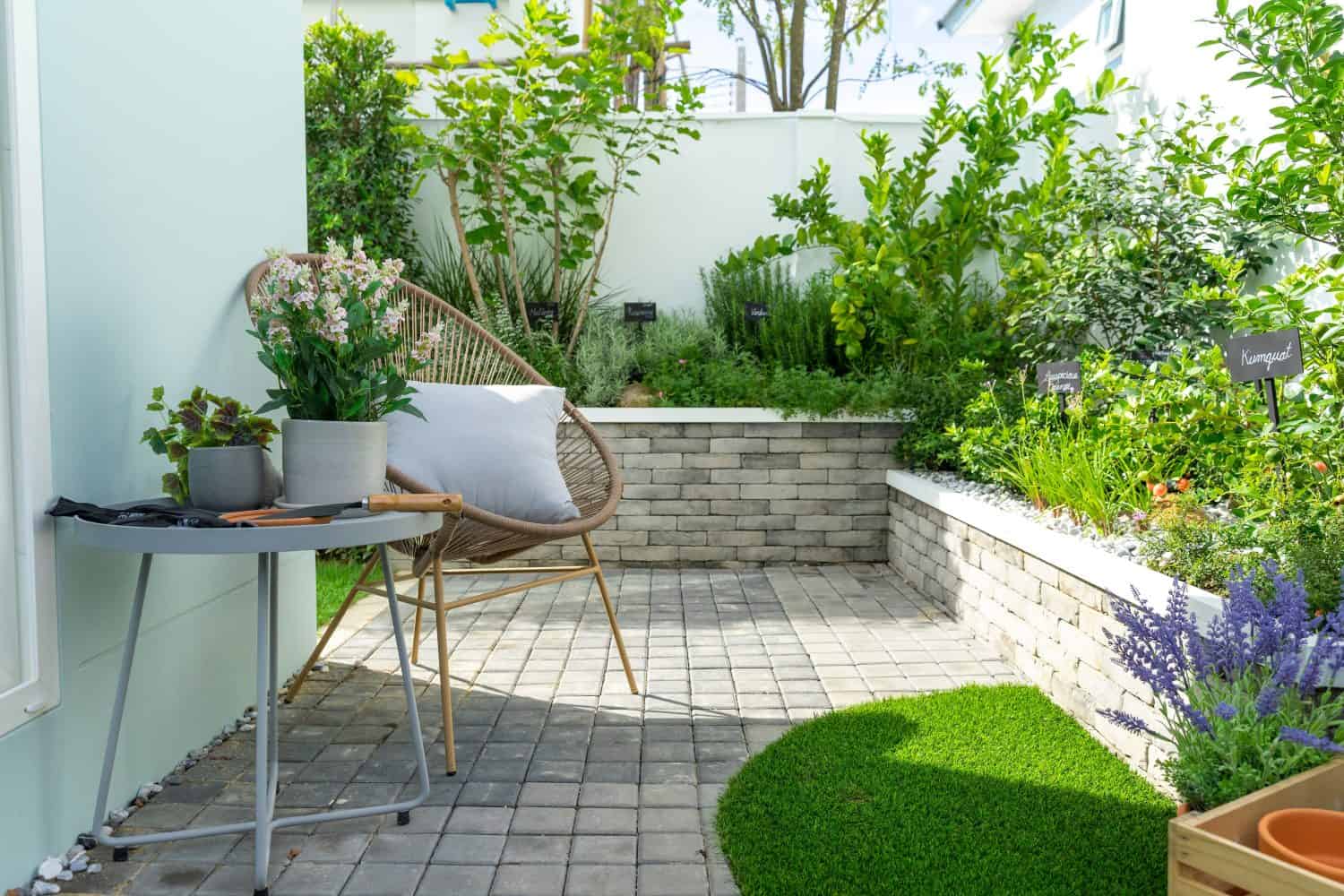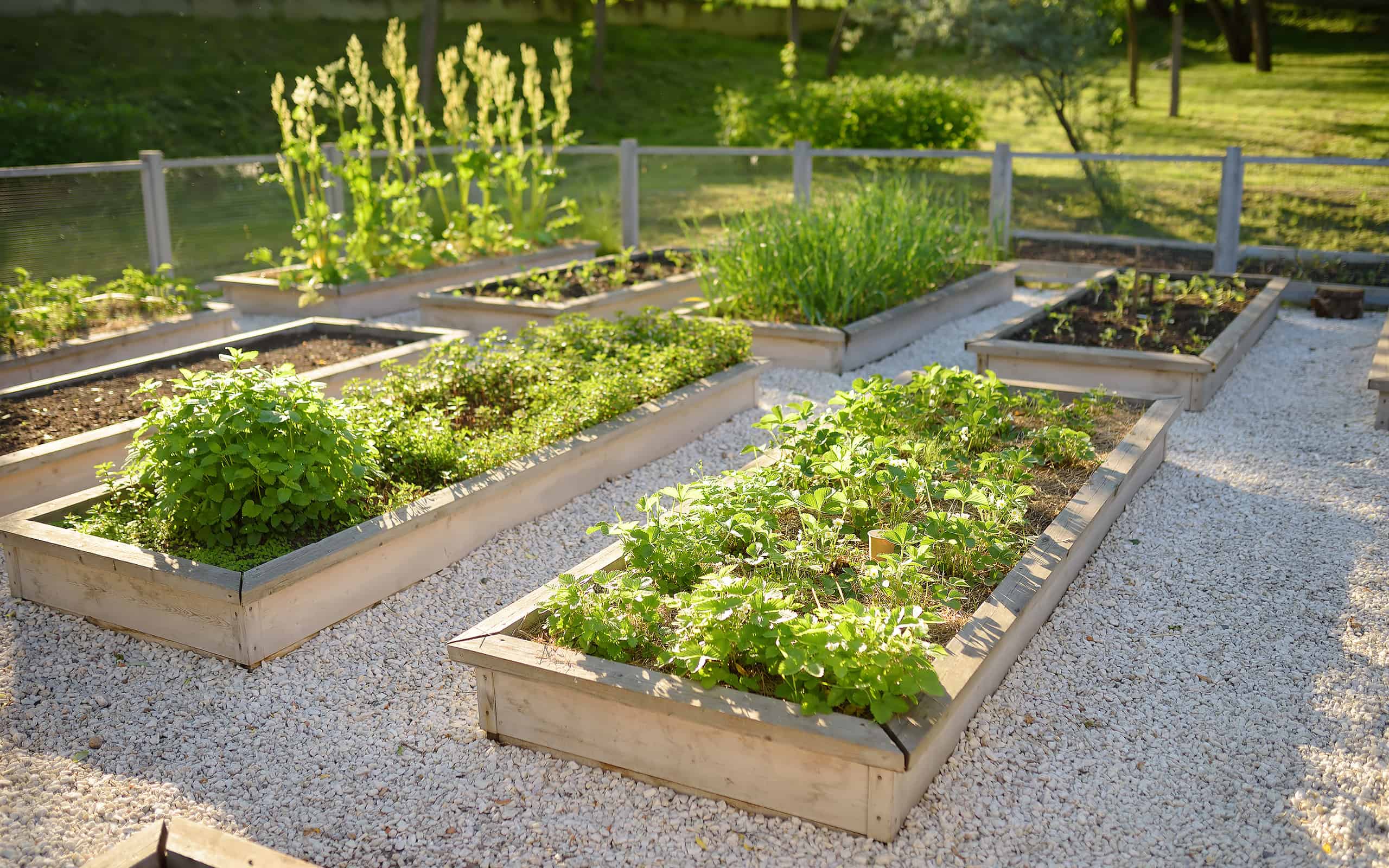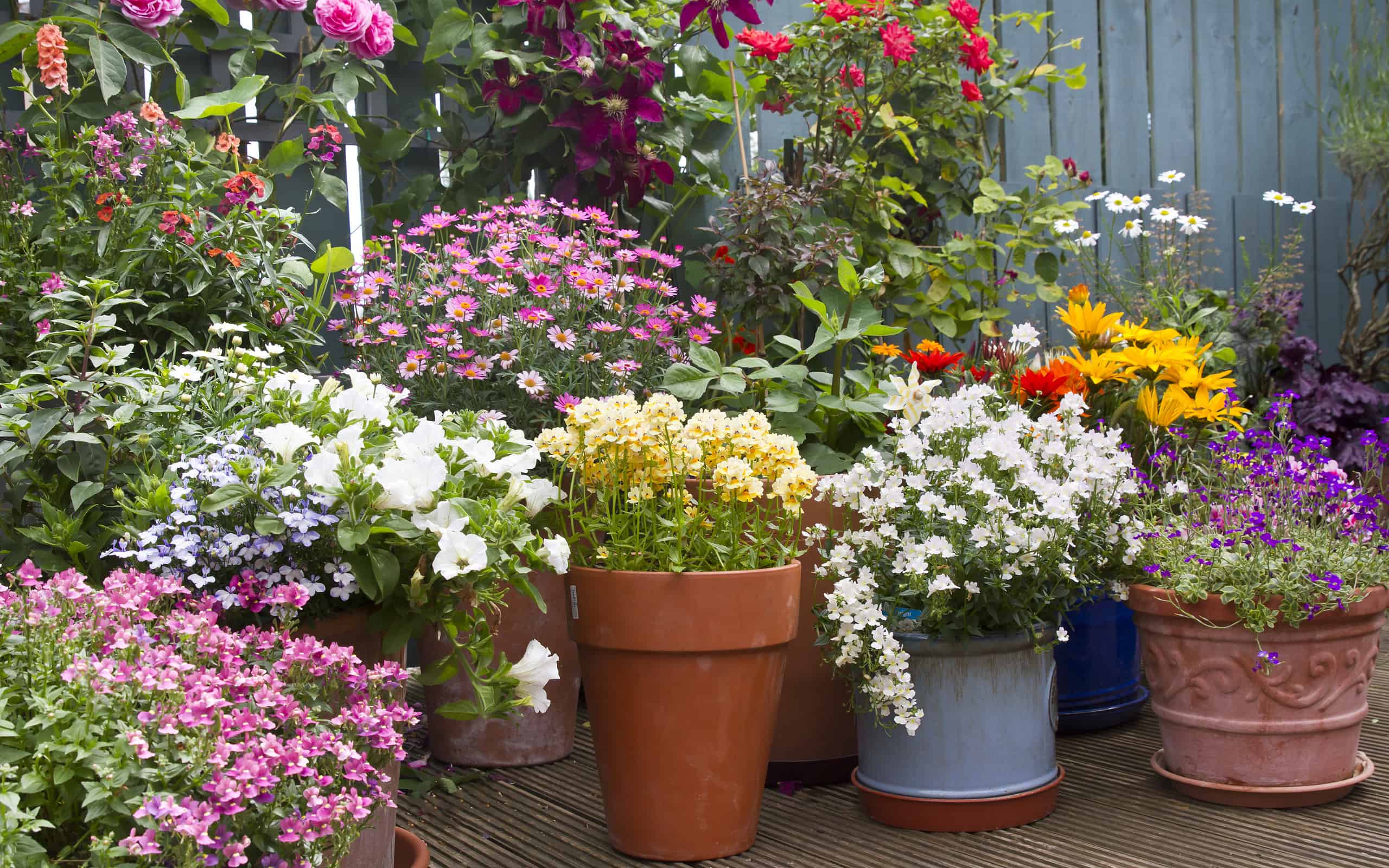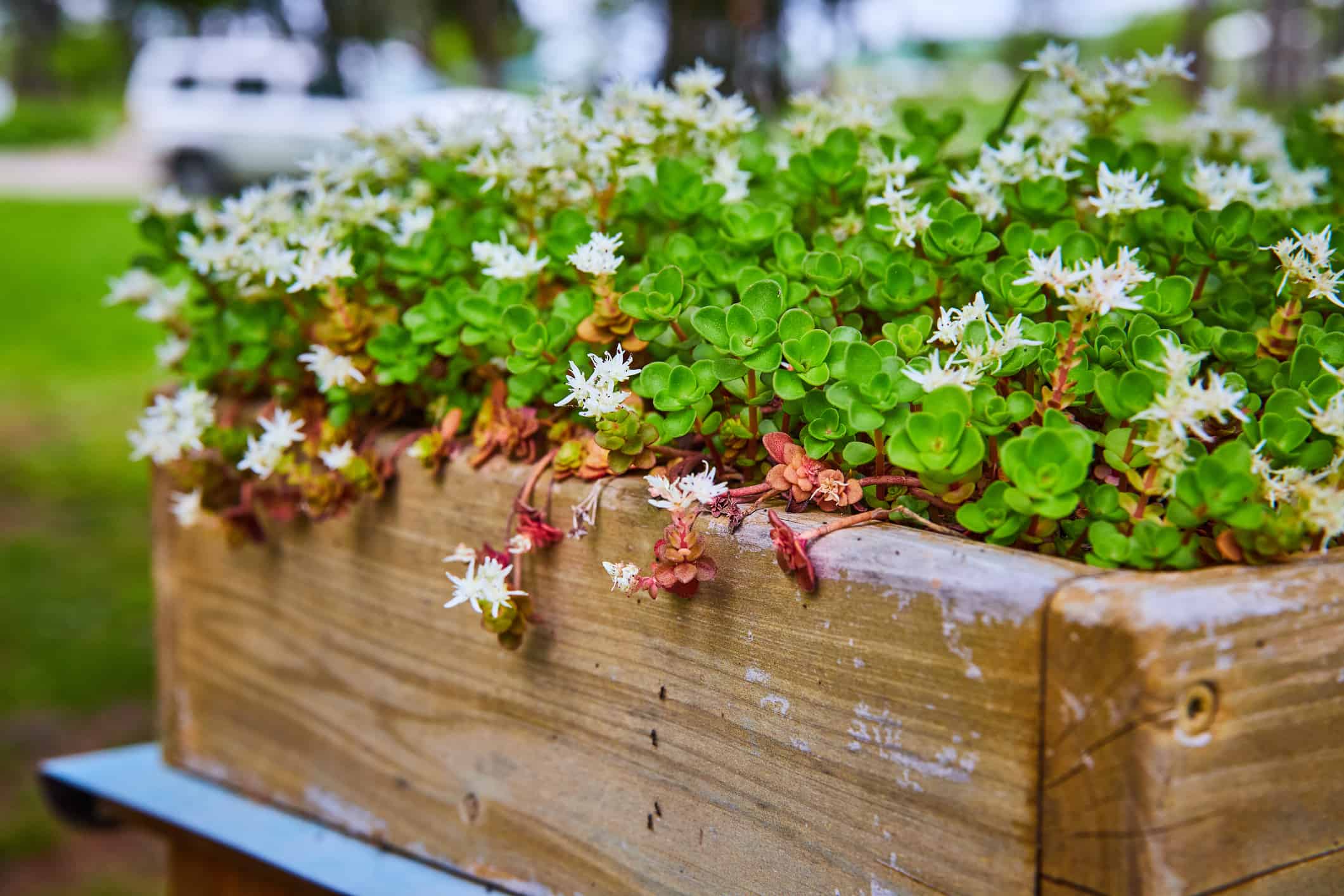
You don’t have to give up on gardening just because you have a small yard with these best gardening methods.
©ben bryant/Shutterstock.com
It’s an unfortunate truth that many people don’t have a yard anymore. Or, if they do, it’s very limited. This means that growing food in your backyard isn’t as easy as it used to be. Sometimes, there are community gardens you can get involved in. But when there’s not, you need to find the best gardening methods for limited space.
This list has options for you. It doesn’t matter if you have only a few feet on your balcony or a small backyard you want to grow in. Keep reading to find ways to produce your own food, or grow beautiful flowers in any limited space.
1. Raised Beds

Raised beds are easy to pull off and they protect your plants from weeds and pests while keeping your garden contained.
©SbytovaMN/iStock via Getty Images
Using a raised bed for your garden works for several reasons. First, studies have shown that vegetables grow better in raised beds than in traditional soil. This means you’ll get more food in a shorter time. Raised beds also allow you to plant anywhere
It may seem like a lot of work to build a raised bed. In reality, though, it’s relatively easy to nail some boards together and stuff the bed full of dirt. Depending on your soil type, it may be easier than tilling the soil and mixing in fertilizer and necessary nutrients. There are also subcategories of raised bed gardening, including square-foot gardening.
Since you can make your soil mix, you can get the perfect drainage and nutrients for your plants. Soil in a raised bed tends to warm up faster in the spring, enabling you to start planting earlier. You can even keep out pesky rodents that like to eat the roots with a mesh underneath.
The best part is, depending on how you make your bed, you can store them away when not in use. If you want a smaller garden one year or need to save space in the winter, you can remove the dirt and store the bed until you need it again.
2. Interplanting

Interplanting allows twice the crops in the same amount of space.
©eurobanks/Shutterstock.com
Also known as intercropping or companion planting, interplanting is another great option. This is a good method to get the most crops out of your garden space. Instead of planting all the same crops in one space, you plant a mix. The plants that grow best together depend on their growing speed.
There are a few ways to do it. Essentially, you take plants that grow faster or smaller and place them in between plants that grow slowly or take up a lot of space. For example, plants with deep roots need a lot of space from each other. In that space, instead of leaving it open, you can plant other fruits and vegetables that have shallow roots and won’t complete.
You can also use this method to help fight off pests. By planting things like marigolds that repel pests between your vegetables, you take advantage of those empty spaces and have a natural insect repellent.
Container Gardening

Growing your plants in pots and containers allows you a lot more freedom.
©sagarmanis/iStock via Getty Images
Container gardening is incredibly useful. It’s a great idea for those who are renting and don’t want to risk getting into trouble with their landlord for ruining the yard. It’s also good for anyone who has limited space.
Because each container can hold a certain number of plants, you don’t have to waste space between plants, so they have room to grow.
Container plants also allow for flexibility. You can move them around however you need. They don’t take up much space when you aren’t using them either, as you can stack them all together.
There’s not much of a limit to what you can grow in pots, either. Fruits, herbs, vegetables, flowers, succulents, and vining plants all work in containers and pots. If you keep your containers inside, there are also far fewer pests to deal with, which is a major plus.
Container gardening also makes your life easier. It helps reduce the growth of weeds. Because they aren’t connected to the ground, you only get a few weeds. The plants inside the containers often need more frequent watering, but it’s a much easier task than weeding.
Succession Planting

If you want continuous yields of your favorite fruits and vegetables throughout the season, try succession planting.
©Bestkadr/Shutterstock.com
For the most part, vegetables and some fruits have a habit of providing a lot of produce in a short burst. You’ll get hundreds of beans or tomatoes, and then nothing. Unless you want to can your vegetables or give them to neighbors, this presents a bit of a problem for those wanting produce throughout the season, but are searching for the best gardening methods for their small garden.
Thankfully, succession planting provides a solution. Instead of keeping those plants around in the hopes that they will give you a few more crops before the season ends, you can just plant new ones.
Three ways to succession plant your garden
Stagger Your Produce
The first is to stagger the fruit or vegetable you want to plant. Let’s take beans, for example. Take however many rows or total number of bean plants you want in your garden and cut it in half. This is how many you are going to plant initially. So if you want to do two rows of beans, only plant one at first.
Then, in about three to four weeks, plant the other row, or the other half of your plants. You should start getting beans from your first row about the same time you’re planting your second. By the time your second row starts producing, your first will be dying off.
Depending on the plant and its growing season, you can do this several times. If you have a plant that will grow for three months, for example, you can plant them in succession four to six times to keep your produce continually yielding vegetables.
To make sure you have enough space, you can even dig up the first batch and put one of the new successions in that spot
Use DifferentPlants
Another option is to use different vegetables back-to-back. You’ll start with an early-season plant, like peas, and grow them first. Then, when that plant is done producing and starts to die off, you plant another vegetable. This time, you’ll use a late-season vegetable, such as beets.
Depending on which plants you want, and your growing season, you can potentially do three or four different plant successions. It also has the benefit of giving you a lot of variety in your garden, so you don’t have to worry about getting tired of a vegetable by the end of summer.
Different Versions of the Same Plant
The last option, if you want a lot of one type of plant, is to pick different maturity rates and varieties of the plant. For example, summer squash. You can find plenty of different kinds of summer squash. Some grow quickly and are early-season plants, some grow a little slower or are mid-season plants, and some are late-season plants that take a long time to grow.
If you start seeding ones with different maturity rates at the same time, then you can get plants that are growing produce at different times. By the time your first-season plants are done growing, your second-season ones are ready to start.
This allows you to plant them at the same time, or start germinating at the same time. You can plant them all at once in the soil close together without having to worry about them crowding each other.
Summary of the Best Gardening Methods for People With Limited Space
| List Number | Gardening Method Name | What It Is | Benefits | Best Plants to Use |
|---|---|---|---|---|
| 1 | Raised Bed Gardening | Making a bed above the ground that you plant into | Can be stored, warms up faster, plants grow faster, ideal soil mix | Onions, Lettuce, Cucumbers, Carrots, Beans, Garlic, and Broccoli |
| 2 | Interplanting | Growing plants that won’t compete together | Allows you to utilize otherwise empty space, may be able to get more produce and keep pests away | Have to look at specific pairs that match up, but corn, broccoli, radish, carrots, chamomile, roses, lettuce, tomatoes, basil, cilantro, chives, eggplants, and tomatoes all work well together |
| 3 | Container Gardening | Growing plants in pots and containers inside and outside | Can move pots around to make room, don’t have to space out plants, can bring plants inside when temperatures dip | Flowers, fruits, trees, succulents, vining plants, most vegetables |
| 4 | Succession Planting | Growing plants in batches throughout the growing season | Allows you to maximize produce yields while minimizing space | Mainly vegetables, but fruits and herbs also work well |
Thank you for reading! Have some feedback for us? Contact the AZ Animals editorial team.








